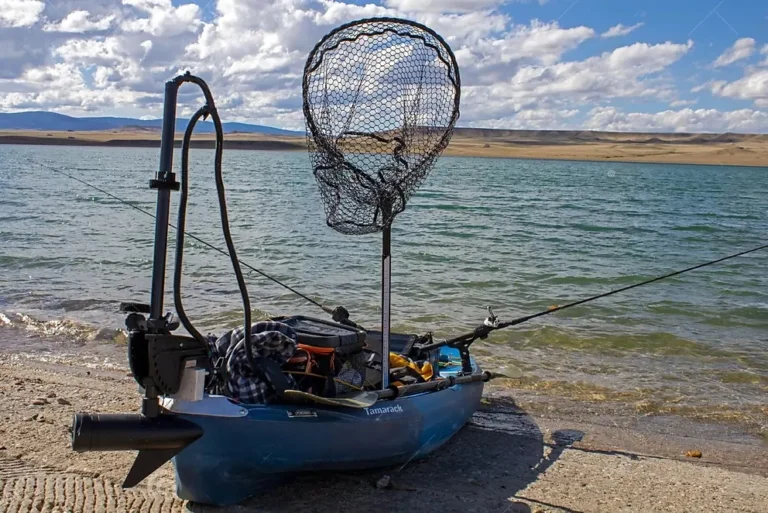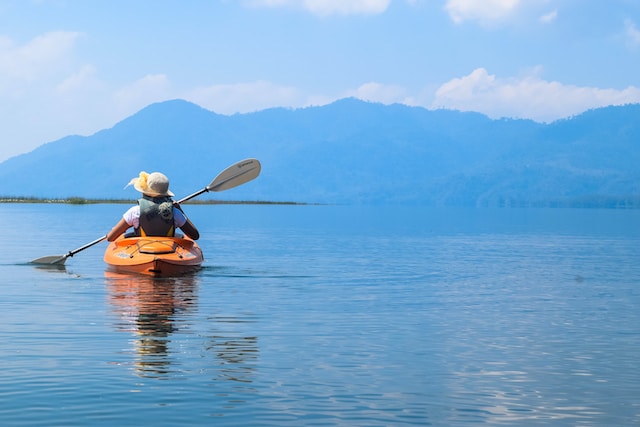How Much Do Kayaks Weigh? – Find Out Here!
How Much Do Kayaks Weigh?
It might seem kinda random, but it actually matters a lot! Imagine trying to carry a super heavy kayak to the lake – ugh! Weight makes a difference in how your kayak feels on the water too.
That’s why we’re gonna discuss about kayak weight. We’ll figure out why it’s important and how it changes your kayaking adventures.
Whether you’re just starting out or love paddling around, knowing about kayaks will help you pick the perfect one.
Kayak Size and Its Impact on Weight
When looking at the weight of a kayak, it’s key to consider its size and dimensions.
The size of a kayak is a big factor in how heavy it is and how well it performs on the water. Let’s delve into how a kayak’s size impacts its weight and performance.
Kayak Dimensions Explained
Imagine a kayak like a car. Just like cars come in different shapes and sizes, so do kayaks! That’s what we mean by kayak dimensions.
We’re talking about how long it is, how wide it is, and even how deep it sits in the water. Think about it this way: a super long kayak is like a racecar – it’s built for speed!
A wider kayak is more like a school bus – sturdy and harder to tip over. And how deep the kayak is kind of tells you how much space you’ll have inside.
Correlation Between Kayak Size and Performance
The size of a kayak affects how it performs on the water. Larger kayaks are more stable, good for relaxed paddling and beginners. Smaller kayaks are easier to maneuver, preferred by experienced paddlers and those who like a more exciting ride.
Bigger kayaks weigh more because they need more material to build them. This can make them harder to transport, especially if you’re on your own. But they offer better stability and can carry more gear for longer trips.
Smaller kayaks are lighter, making them easier to transport and move around. But they may not be as stable or have as much storage space as larger ones.
Choosing the right kayak means finding a good balance between size, weight, and how it performs. Think about where you’ll be kayaking, your skill level, and what you plan to do while out on the water.
Understanding how kayak size and weight are connected will help you make a smart choice that improves your kayaking experience.
How Much Do Kayaks Weigh?
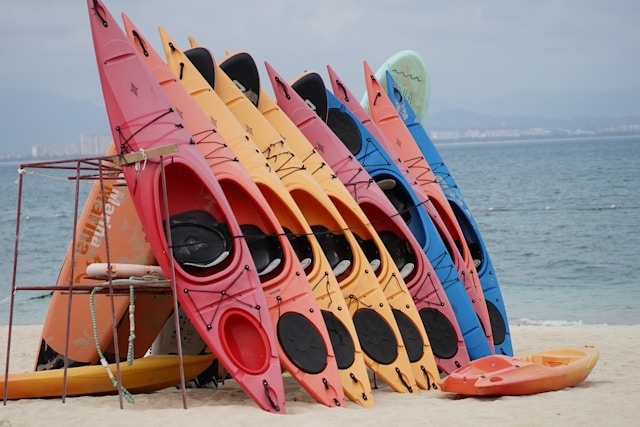
Now let’s look closer at the specific weights of kayaks. The weight of a kayak can vary depending on the type and style you choose.
Recreational kayaks are on the lighter side, usually weighing between 30 and 50 pounds. They’re good for calm waters and easy paddling, great for beginners and casual kayakers.
Touring kayaks, made for longer trips and tougher conditions, are heavier. They can weigh between 50 and 70 pounds, offering better stability and tracking in rough waters.
Sea kayaks, popular for open sea adventures, weigh between 60 and 80 pounds. They’re sturdy and stable for long trips in challenging ocean conditions.
Remember, these weight ranges are averages and can vary based on the specific kayak model and materials used in its construction, like plastic, fiberglass, or carbon fiber.
Understanding the typical weights of different kayak types can help you choose the right one for your needs and preferences.
The Significance of Kayak Construction on Weight
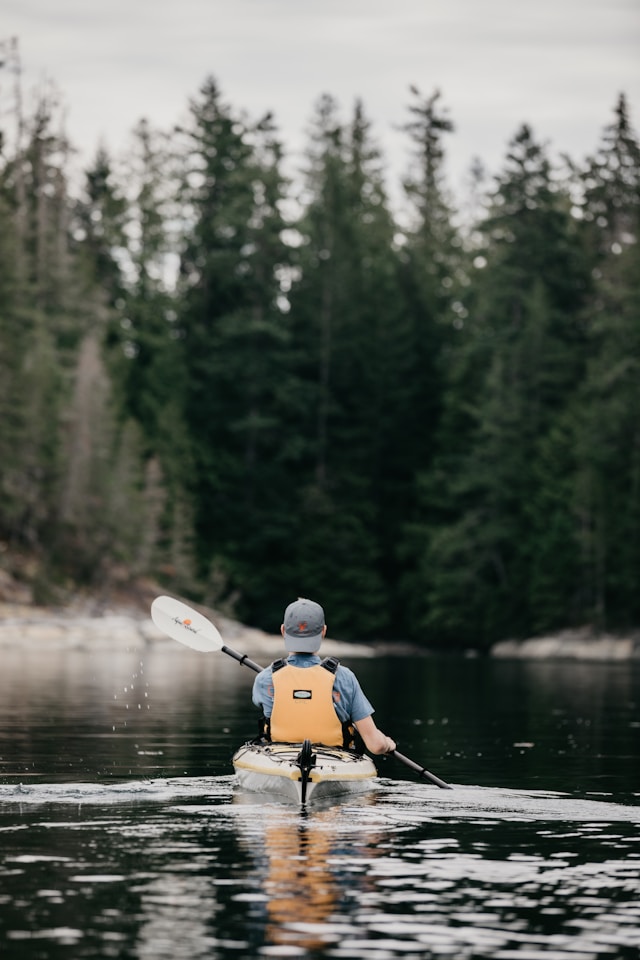
A kayak’s weight is affected by how it’s built. The materials used and how it’s made can make a kayak heavy or light. Knowing this helps kayakers pick the best kayak for them.
Materials and Manufacturing Processes
Kayaks are made from different materials, and that affects their weight!
Here’s a breakdown of the most common options:
- Polyethylene: The most basic and affordable material. It’s tough but also the heaviest.
- Fiberglass: Offers a good balance of strength and weight, making it popular with many kayakers.
- Carbon fiber and Kevlar: These are super lightweight and strong, but they’re also the most expensive choices.
Remember, it’s not just about the material! The way a kayak is built also affects its weight and cost. Different building techniques can make a kayak lighter or heavier, even if it’s made from the same material.
Comparing Weight Across Different Kayak Materials
Fancy materials like carbon fiber and Kevlar make super light kayaks, but they cost more and might not be as tough as heavier stuff like polyethylene. Fiberglass is a popular choice because it’s a good mix – strong, not too heavy, and won’t break the bank.
Why does weight matter? Well, a lighter kayak is easier to carry around, load on your car, and store away. Perfect if you’re always on the go! But remember, you still want it to be strong enough for the water.
Knowing how kayaks are built helps you choose the best one. By understanding the materials and how they put it all together, you can find a kayak that has the perfect balance of weight, performance, and how tough it is!
Average Weights of Recreational vs. Touring vs. Sea Kayaks
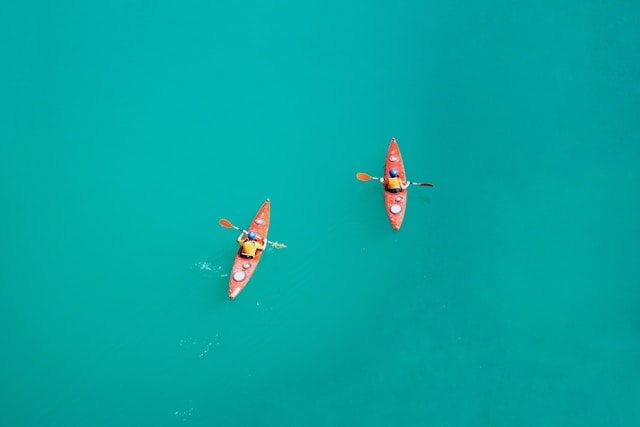
Let’s break down how heavy different types of kayaks usually are. Knowing this helps you pick the perfect one for you!
- Chill Out Kayaks (Recreational): These are the lightweights, usually 40-60 pounds. They’re designed for lakes and calm rivers, and are super stable and easy to use. Perfect for beginners or anyone who wants a relaxing float!
- Adventurer Kayaks (Touring): Ready to go further and handle some choppier water? These kayaks are built stronger, so they weigh a bit more – think 50-70 pounds. This extra weight helps them stay steady in tougher conditions.
- Ocean Explorer Kayaks (Sea): Going for big expeditions? These kayaks are the beefiest! Built for oceans and long trips, they usually weigh 55-75 pounds. They’re the most stable but also the hardest to carry around.
Choosing Your Kayak Weight
Think about where you’ll be paddling and how strong you are! Lighter kayaks are easier to carry and move around, while heavier ones might be tougher but better for those rough ocean waves. It’s all about finding the right balance for your awesome adventures!
How Construction Affects Kayak Weight
Just like how toys can be made of heavy metal or light plastic, the stuff and how they make your kayak changes how much it weighs. Here’s the scoop:
- Fancy Materials: Things like carbon fiber and Kevlar are super strong but super light. They make awesome kayaks, but cost more.
- Foamy Filling: Some kayaks have a foam center, like a sandwich! This makes them lighter without being flimsy. You can mix foam with other stuff for the perfect mix of lightweight and tough.
- Special Building Tricks: Words like “vacuum infusion” and “thermoforming” are just fancy ways of saying they use cool tech to make kayaks lighter and stronger.
Why Should You Care? Lighter kayaks are way easier to carry, load on your car, and paddle around! Imagine trying to paddle a super heavy kayak – yikes!
So, how they build a kayak makes a big difference! Using smart materials and cool tricks means lighter kayaks that are way more fun to use. Whether you’re just starting out or love big adventures, understanding this helps you pick the perfect kayak!
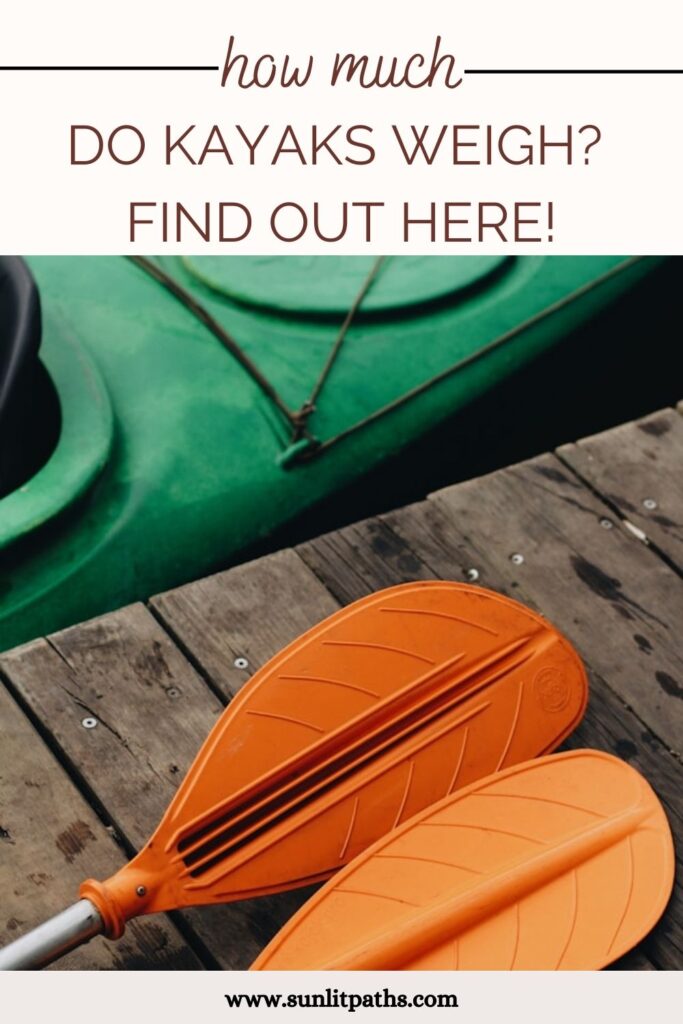
Transportation and Storage Considerations
A lighter kayak makes life SO much easier! Here’s why:
- Carry it yourself: No need to wait for help! You can easily carry it to the water and load it onto your car, perfect if you kayak alone or need to walk a bit to reach the launch spot.
- Easy storage: Putting a lighter kayak away after your adventure is no big deal.
But, a heavy kayak? That’s a different story. It needs more muscle and maybe even fancy stuff like a cart or trailer to move it around. That can limit where you go – tough to explore new spots if getting your kayak there is a mission!
Impact on Kayak Performance and Handling
A lighter kayak feels zippy and quick! It’s way easier to turn, spin, and zip through tricky spots on the water. This gives you more control and makes paddling way more fun.
Heavier kayaks feel more solid and stable, which is great for beginners or if the water’s choppy. But, they might not turn as fast and can be tougher to move around in tight areas.
The trick is finding the perfect mix for YOU! Think about these things:
- Are you a new paddler? A bit of extra weight might help you feel more stable.
- Where will you kayak? Tight rivers need a nimble kayak, but big lakes are fine with heavier ones.
- Do you like a challenge? Lighter kayaks keep you on your toes!
How to Find a Kayak’s Weight and Why It’s Important
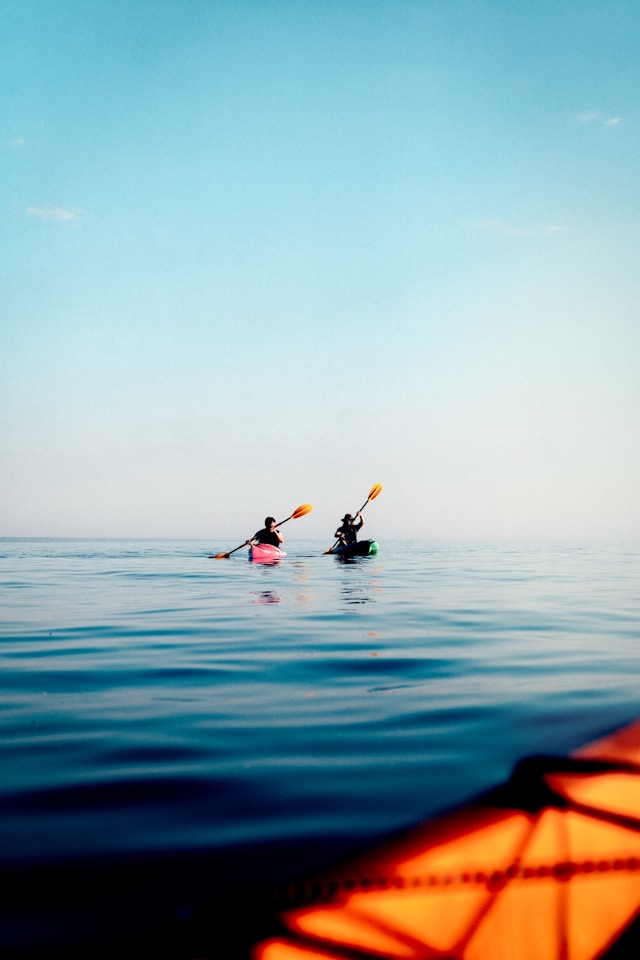
How heavy your kayak is seriously affects how it feels on the water AND how easy your life is when you’re not paddling.
Hold on to your paddles! We’re about to dive into how to weigh your kayak like a pro, and why this knowledge makes you a kayaking superstar!
Manufacturer Specifications vs. Real-World Measurements
- Check the website: Start by looking up your kayak model online. The company who made it usually lists the weight there. Just remember, it might be a tiny bit off because each kayak is made slightly differently.
- Weigh it yourself!: Got a bathroom scale? Step on it, then step on while holding your kayak. Subtract your weight from the second number, and bam! You’ve got your kayak’s weight. If it’s too heavy, find a special kayak scale.
- Ask the experts: Kayak shops love to help! They can weigh your kayak on the spot and give you the exact number.
Assessing the Weight for Your Needs
Now that you know how to find out your kayak’s weight, let’s get into why it matters so much! Here’s what to think about:
- Your Paddling Style: Love going fast or on long trips? Aim for a lighter kayak! Want a super stable ride, even in choppy water? A bit heavier might be better.
- How Strong You Are: Lighter kayaks are way easier to carry, load on your car, and store away. Heavier ones might need extra muscle (or friends to help!)
- Where You’ll Paddle: Tight rivers and streams need a nimble kayak, but big open lakes are fine with a heavier one.
Finding Your Perfect Balance
The trick is picking a kayak that feels great on the water AND isn’t a pain to deal with when you’re out of the water. Knowing your kayak’s weight helps you make a smart choice for amazing adventures!
The Intricacies of Inflatable Kayak Weight
Inflatable kayaks are awesome because they basically disappear when you’re done with them! You can fold them up small so they’re easy to carry and even fit in your closet. This makes them perfect for:
- People who live in small spaces
- Taking your kayak on trips
- Paddling in places you have to walk to
They also feel super zippy on the water! Because they’re light, it’s easy to paddle fast and whip them around in tight spots.
Things to keep in mind: Inflatable kayaks are a bit less tough than hard ones (think of them like a tough pool toy). They’re still plenty strong for most adventures, but you might want a hard kayak if you’re paddling somewhere with sharp rocks.
The bottom line: Inflatable kayaks make kayaking easier and more fun, especially if you don’t have a ton of space or muscle! Understanding how they work helps you pick the perfect one for your adventures.
Discovering Tandem Kayak Weight: Factors to Consider
When two people head out in a tandem kayak, the weight of that kayak matters a LOT! Here’s why:
- Design Matters: How the kayak is built changes the weight. Fancy materials make it lighter. The shape of the bottom matters too! It’s all about finding a design that balances being lightweight and strong.
- Sharing the Load: Imagine a seesaw – if one side is way heavier, it’s no fun! Same with kayaks. A well-designed tandem kayak keeps the weight even for smooth paddling for both people.
- Easy Does It vs. Super Stable: Lighter kayaks are way easier to carry and turn. But, they might wobble a bit more in choppy water. Heavier ones are harder to move around but feel steadier on the water.
The trick is finding the right balance for you and your paddling partner:
- Where will you paddle? Calm lakes are fine with a lighter kayak, but oceans need a sturdy one.
- How strong are you? A lighter kayak is WAY easier to deal with out of the water.
Thinking about these things helps you pick the perfect double kayak for double the fun!
Conclusion
We’ve talked a lot about kayak weights – how they change with different types, what they’re made of, and all that good stuff. Here’s why it’s important:
- Kayaks aren’t just for the water: Think about carrying your kayak to the water, loading it on your car, and putting it away. Lighter kayaks make life SO much easier!
- How it feels to paddle: Heavier kayaks feel stable, good for beginners or rough water. Lighter kayaks are zippier and easier to turn, making paddling more exciting.
- Finding YOUR perfect kayak: It’s all about balance! Pick a kayak that’s the right weight for the type of paddling you love and how strong you are.
Next time you’re looking at kayaks, don’t just think about how they look – remember weight matters way more than you might think! Knowing this helps you pick the perfect kayak for amazing adventures.

